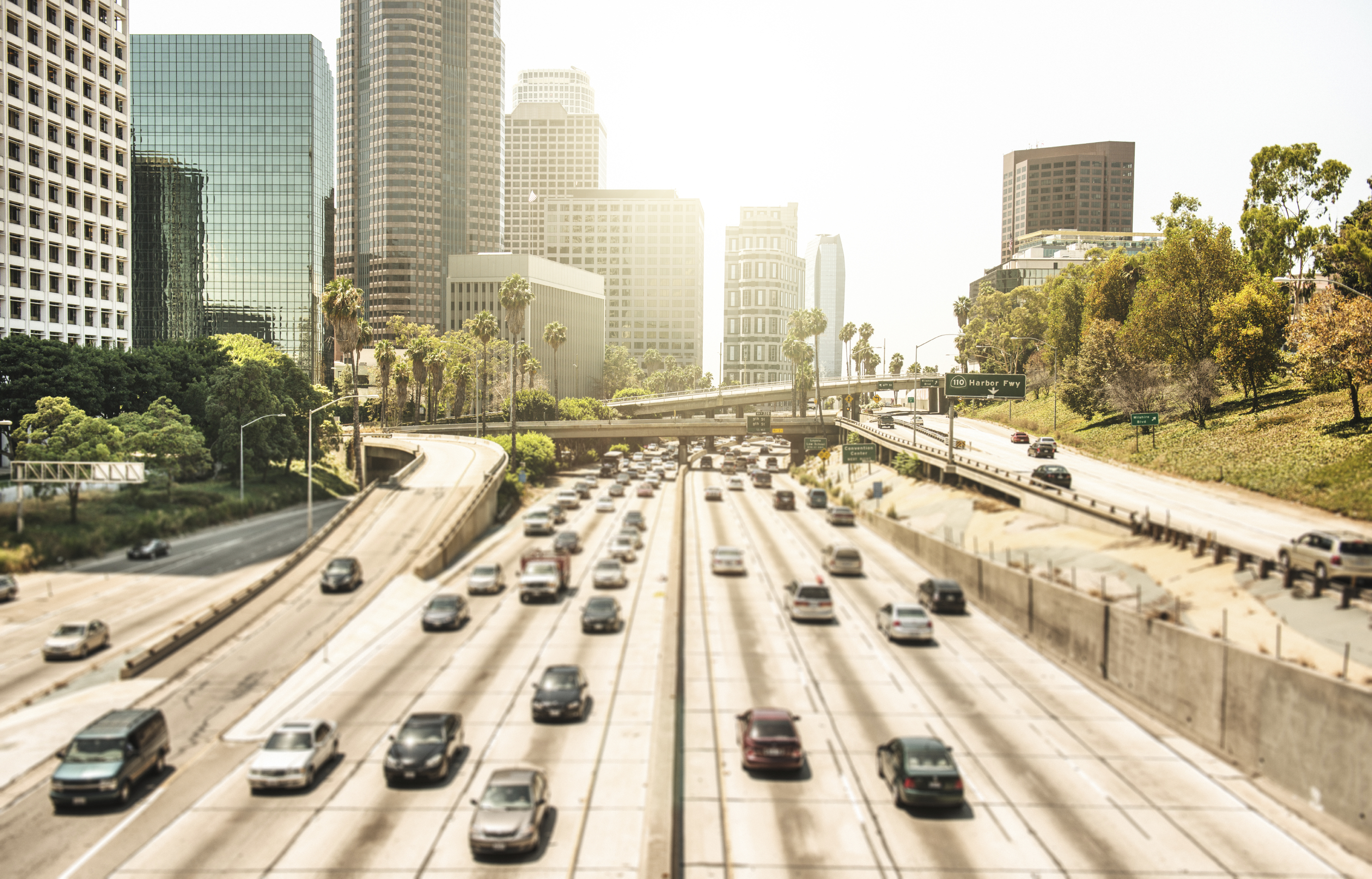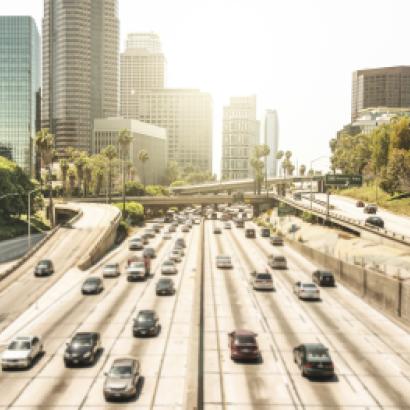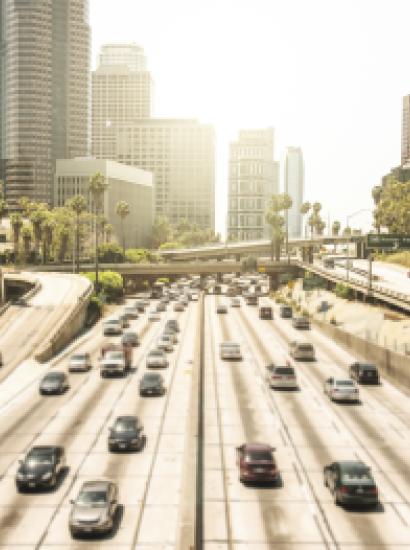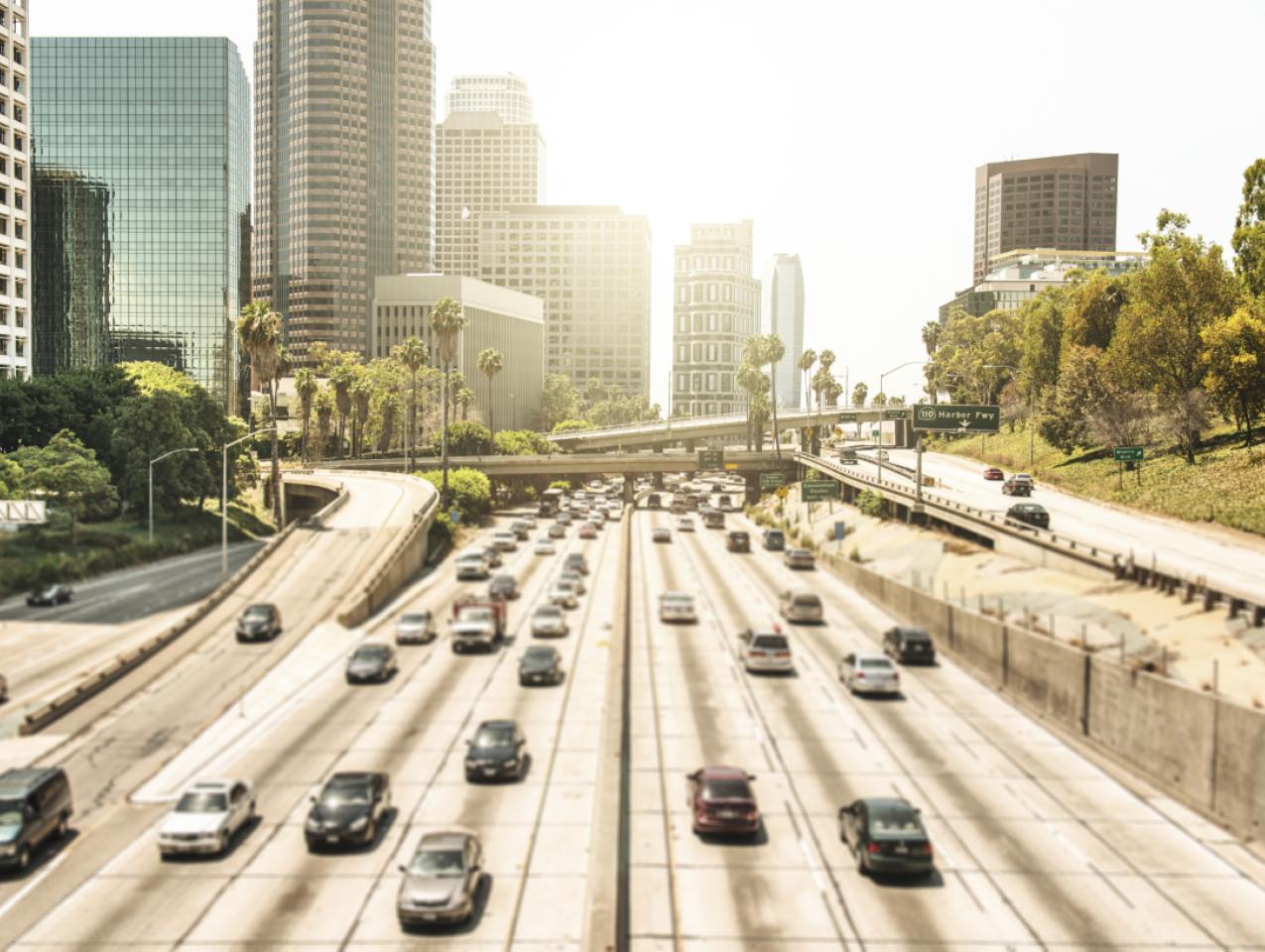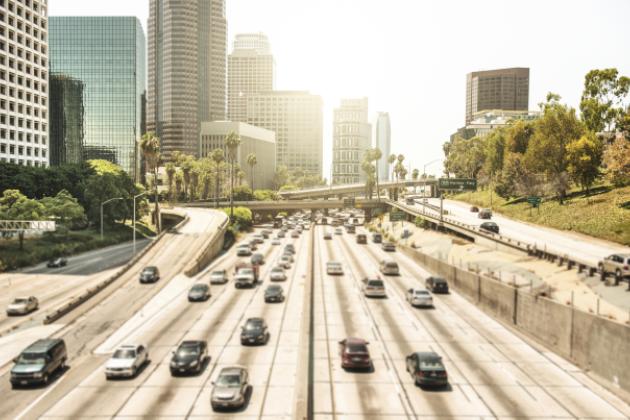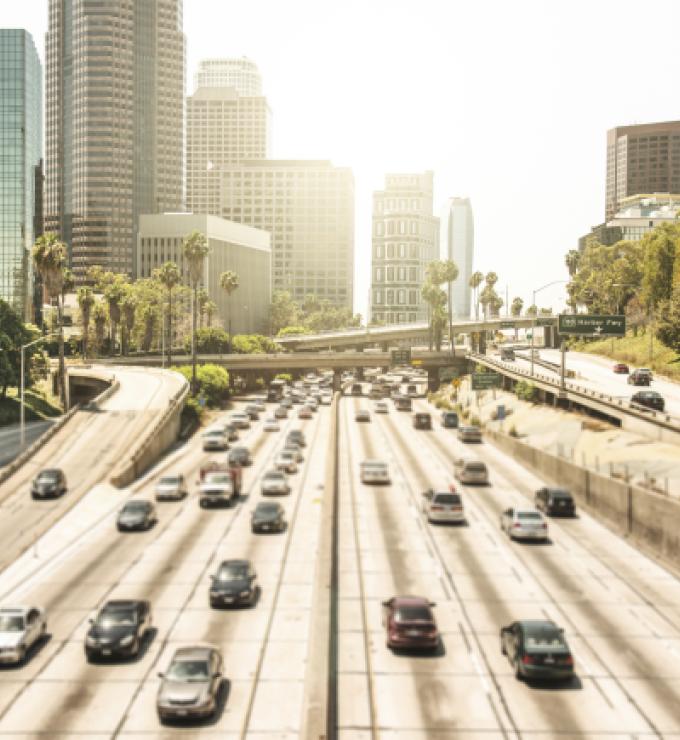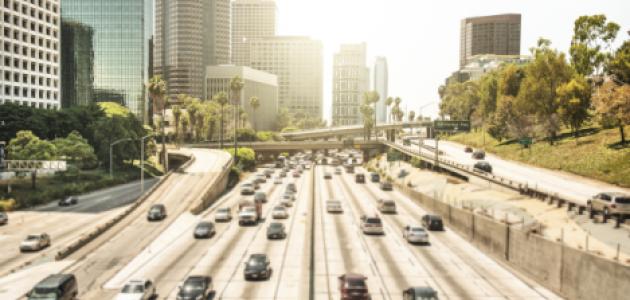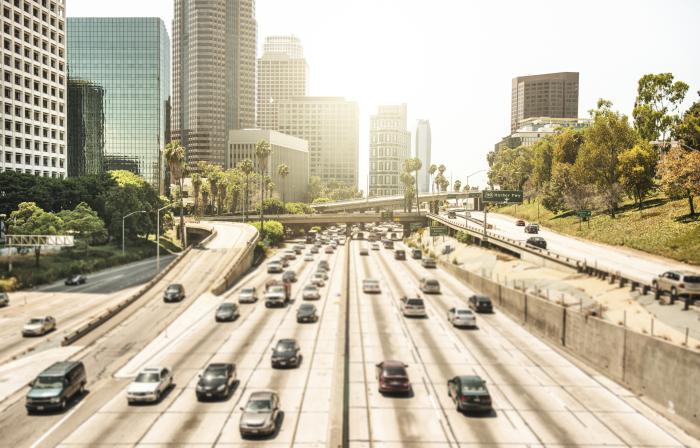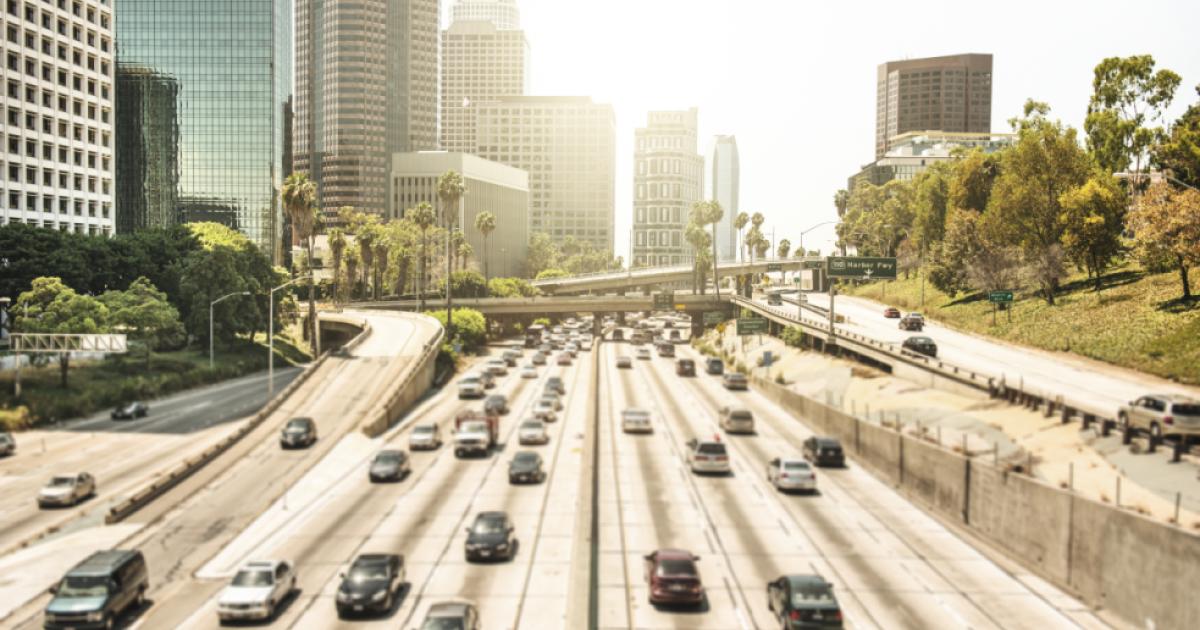- Energy & Environment
- Science & Technology
- Politics, Institutions, and Public Opinion
- State & Local
- California
One of the great things about California is that we build the future. From Bill Hewlett and David Packard at the tail end of the 1930s, through Steve Jobs and Steve Wozniak in the 1970s, to all our great tech companies today, the Golden State has blazed a path of innovation. All of that was built first on imagination.
That’s what I’m doing with Senate Bill 319, the High-Speed Road. Here’s the idea: build four lanes in the middle of Interstate 5 and allow someone to drive at, say, an average of 100 miles per hour, thus being able to traverse the 305 miles between the base of the Grapevine (south of Bakersfield) to Sacramento in three hours.
And when they get to their destination, they will be driving their own car or a self-driving rental. The cost to build: $3 billion.
Already on these and other state freeways, drivers commonly drive 85 miles per hour just to keep up with the traffic flow—when it is flowing, rather than stopped solid or crawling at a snail’s pace because more lanes are needed.
Contrast that with the failed high-speed rail project, which was sold to California voters in 2008 as making a Los Angeles to San Francisco trip in two hours and 40 minutes, and whose construction costs have since ballooned, at last estimate, to least $77 billion.
But when you reached your destination, you’d still have to take a bus, rent a car, request an Uber ride, hop on a scooter, or walk for that proverbial last mile. What an exorbitant expenditure of the taxpayers’ money that doesn’t count the costs of the last mile.
The California “high-speed road” is inspired by Germany’s famed autobahn system, which long has boasted unlimited speed limits. As Travel Pulse notes: “The German Autobahn has always had a special place in the world’s imagination, with thoughts of driving down this motorway holding a pole position on many a motorist’s bucket list.”
Similar adventures would entice motoring tourists to drive the high-speed road, giving a boost to the California tourism economy.
Practical Reasons
Aside from the fun, there are practical reasons for passing SB 319. Most Californians have gotten car sickness driving in stop-and-go traffic on Interstate 5. Then there’s dodging in and out of traffic to avoid being crushed between giant semis.
The high-speed road has numerous advantages. It would move a lot of cars off the existing slower lanes, allowing traffic there to flow more smoothly—and faster, albeit not at the unlimited speeds on the designated lanes of the high-speed road. This will assist goods movement.
Because the high-speed road would be closed to trucks, drivers on the new lanes wouldn’t have to worry about being held up by a semi race clogging the two existing lanes.
Because vehicles wouldn’t be stalled in traffic, idling and spewing out fumes while going nowhere, running at efficient speeds should reduce greenhouse gases.
Safety also could improve. According to World Health Organization data, German road fatalities were 4.3 per 100,000 inhabitants per year in 2015, compared to 10.9 in the United States.
Germany’s Federal Highway Research Institute, called BASt, calculated the death rate on national rural roads was 0.22 per million kilometers, but less than half that, 0.09, on autobahns.
Then there’s Montana, which removed its speed limits on some freeways in 1995, then restored them in 1999. An analysis by the National Motorists Association found: “The safest period on Montana’s Interstate highways was when there were no daytime speed limits or enforceable speed laws.”
“The doubling of fatal accidents,” the association stated, “occurred after Montana implemented its new safety program; complete with federal funding, artificially low speed limits and full enforcement.”
Naturally, like the autobahns, the high-speed road would have to be highly engineered and drivers trained properly before driving on them. Those are details to be worked out through the legislative process.
Funding
As to how the state would finance the project, a start would be to shift funding currently going to high-speed rail. According to a November 2018 audit by California’s state auditor, the rail project “receives 25 percent of the revenues from the State’s cap-and-trade program, resulting in $1.7 billion as of December 2017.”
Shifting that money to the high-speed road until its $3 billion cost is met would do the job.
Then there’s the $3.5 billion for the rail project from the federal government from the Obama administration’s 2009 stimulus program. About $2.5 billion already has been spent, with around $929 million remaining. Because the money was contingent on a Los Angeles-to-San Francisco line—not the truncated system that Governor Gavin Newsom now is supporting—President Trump has demanded a refund of the full $3.5 billion in federal cash.
How about if California uses that remaining $929 million on the high-speed road, and the state and Trump call it a deal? As the president wrote in The Art of the Deal: “I like thinking big. I always have. To me it’s very simple: if you’re going to be thinking anyway, you might as well think big.”
Then the remainder of the project could be funded with cap-and-trade revenues.
Legislative Roadblocks
There is a roadblock: SB 319 purportedly goes against the policy of the California State Senate Transportation Committee, as it “will not consider any measure that contains provisions advantaging or directing the construction or funding of a specific transportation project subject to the statutory project selection process administered by the California Transportation Commission (CTC) and involving the Department of Transportation (Caltrans) and regional transportation agencies.”
Moreover: “The committee will not consider any measure that would result in changing a speed limit on a specific segment of highway or any class of highway without justification by an engineering and traffic survey (ETS).”
Let’s set the record straight. My proposal is outside this framework, with its own funding source, as described previously or through the potential use of tolls. The high-speed road is beyond Caltrans’s current, unimaginative State Transportation Improvement Program. It’s an innovative idea waiting for a green flag.
I’m advancing a new concept that would use new technologies. These could include not only self-driving cars, but also sensors built into the road to regulate speed, ensure proper lane changes, warn of hazards ahead, and even prevent drunk driving. For example, artificial intelligence could run ten cars a few feet apart at 100 miles per hour—more safely than current roads. There’s your train!
Another innovation might be to use the path cleared by the new high-speed road as a place that also could run Elon Musk’s Hyperloop, which would send individual “pods” carrying people at up to 700 miles per hour. In March, the Pennsylvania Turnpike Commission awarded a $2 million contract to study the feasibility of building a Hyperloop between Pittsburgh and Philadelphia, which is a distance of about 304 miles (almost 20 miles longer than the stretch of I-5 between Sacramento and Bakersfield).
Said Aaron D. Kaufer, a member of that state’s House of Representatives: “As new technologies and methods of transport are contemplated, Pennsylvania has a unique opportunity to once again be a leader and innovator.”
California Leads
The future is coming at us fast. Imagine using your cell phone to order a self-driving rental car. This personal rapid transit arrives and takes you up or down the Central Valley as you work or watch a video on your trip. The new designated lanes enhance this vision.
California should not cede to the Keystone State, or any other state, leadership in new transportation technologies. It’s time for Sacramento to start acting like an innovative company. We need transportation that’s faster and safer than what we currently have and based on artificial intelligence and other new technologies.
I want to keep California in the pole position.







